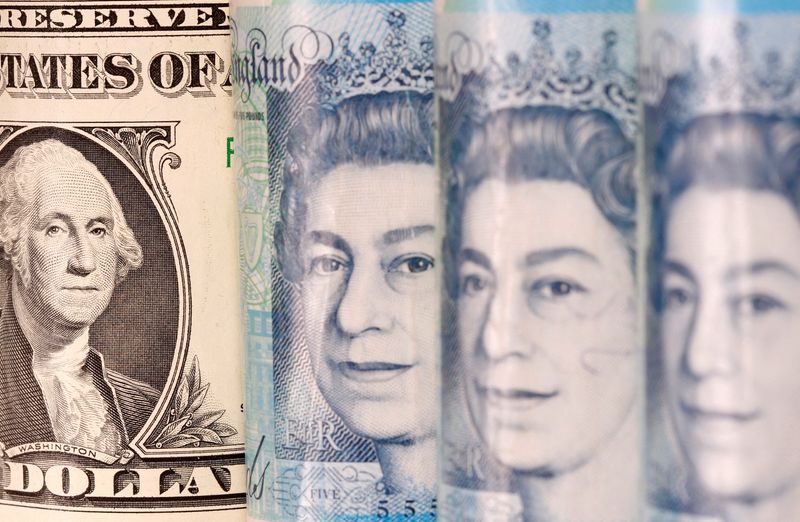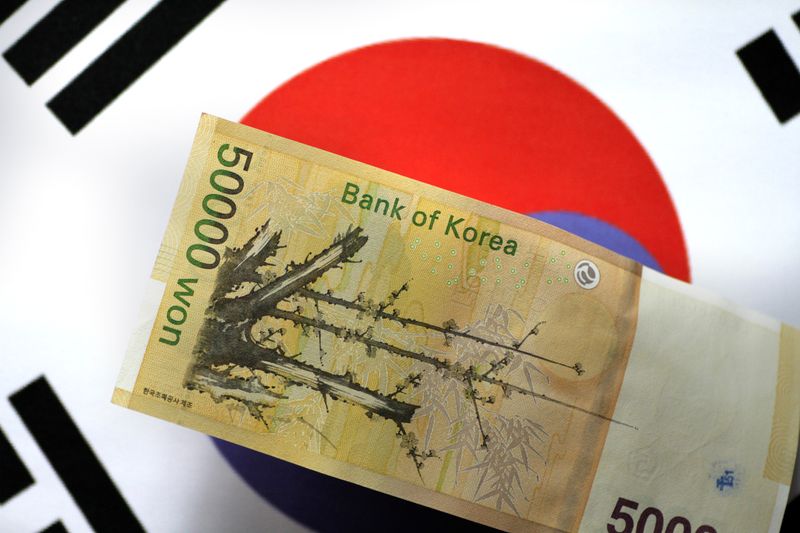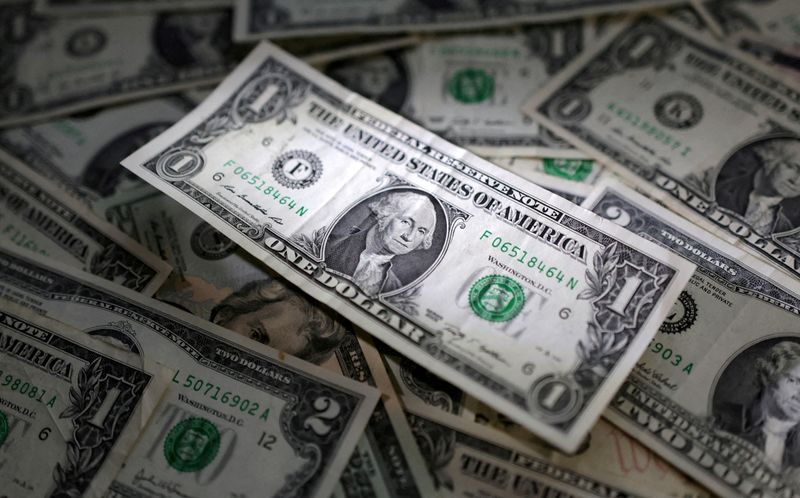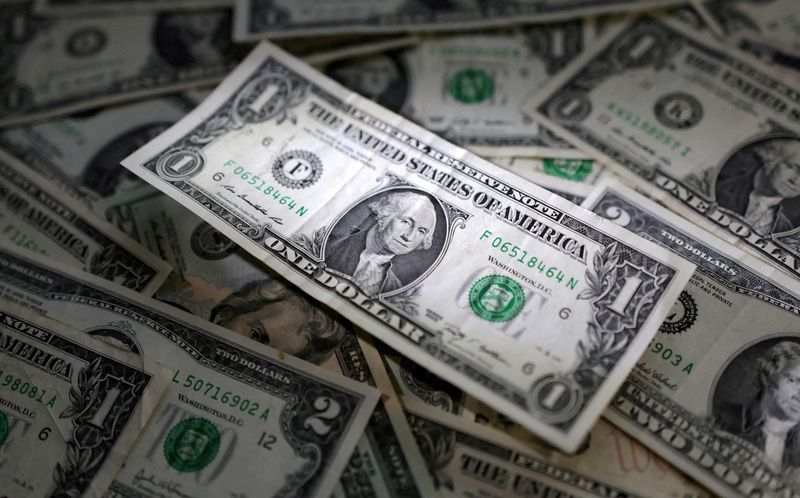Month: February 2024
Investors are buying back into the pound’s pizazz
Post Content
South Korea hopes currency reforms will move chunk of NDF trading to spot deliverables
Post Content
Asia FX creeps lower, dollar firm as China rate cut gives little support
Post Content
The 2024 Bitcoin Halving: A BTC Value Boom or a Survival Crisis for Miners?
With 2024 already underway, the anticipation in crypto circles is hitting a fever pitch as everyone braces for Bitcoin’s halving – an event that could reshape its market landscape. It deserves to be looked into as historically this event sparked transformative waves across the crypto scene. Knowing what we’ve learned from previous halvings, we’re set to steer ahead with a keen eye, making sure our moves are shaped by those insights. But is this upcoming halving any different? Let’s figure it out.
From Digital Gold to Rare Platinum: Bitcoin’s Story of Increasing Scarcity and Value
Bitcoin design is all about making BTC less and less available over time, keeping inflation in check. There’s a set cap of 21 million Bitcoins to ever exist, and we’ve already hit the 19.62 million mark. The scarcity of Bitcoin, with its strictly limited release into the market, is a major reason why people call it “digital gold” – as both these assets have that “hard to come by” quality.
Thinking of the Bitcoin blockchain as a ticking clock, we can see that halving occurs every 210,000 blocks, or about every four years, with the reward for mining new blocks getting chopped in half. It’s been this way since Bitcoin’s kick-off in 2009, starting at 50 BTC per block and heading down to 3.125 BTC in 2024.
The Stock-to-Flow ratio, which compares existing supply to new coins coming in, shows Bitcoin is about to get rarer than a platinum album. By 2032, after the 2024 and 2030 halvings, Bitcoin’s scarcity will soar, so it will be even more of a gem than gold.
Source: LookIntoBitcoin
Bitcoin’s Post-Halving Growth Patterns
Let’s take a stroll down Bitcoin’s memory lane. After each halving, Bitcoin’s price has skyrocketed. Post the 2012 halving, just 100 days later, the market cap exploded by 342%. Even more impressive, the peak price hit a staggering $1,152 the next year, an 8,761% leap. Flash forward to 2016: rewards halved from 25 to 12.5 BTC, and the price soared to $17,760 the following year, a 2,572% jump. The most recent halving in 2020 saw the reward drop to 6.25 BTC, and Bitcoin’s price didn’t disappoint, hitting $67,549 the next year, marking a solid 594% growth.
If we play armchair mathematicians for a bit, we can look at how Bitcoin’s growth rate decreased after past halvings – by 70.64% from halving one to two and by 76.91% from two to three – and average out those decreases to land at a growth rate decrease of 73.78%. We then slap this onto the 594.03% growth post the third halving and – voila – we get a speculative growth rate of 155.79% after the 2024 halving. This means Bitcoin could potentially hit around $111,807 between one to one and a half years after the upcoming halving. But let’s be clear: this all is merely speculation and definitely not something to base your investment decisions on.
Miners’ Survival of the Fittest
For Bitcoin miners, the 2024 halving will be an uphill battle. With rewards slashed in half, miners operating with outdated equipment and facing high electricity bills will be caught between a rock and a hard place. In Italy, for example, mining a single Bitcoin can reach as much as a luxury Lamborghini Huracán or a Porsche 911 Turbo S, with costs soaring up to $208,560.
Source: CoinGecko
The 2024 halving will transform the mining landscape into a scene reminiscent of ‘The Hunger Games,’ where only the strongest miners, armed with the most efficient technology and access to affordable energy, will survive. This halving will be like the ultimate arena, a test of strategy and resilience, where only those equipped with savvy cost-effective tactics will emerge as victors in the competitive battleground.
Closing Thoughts
So, the 2024 Bitcoin halving is poised to seriously shake things up, with major changes in mining operations and a potential big swing in Bitcoin’s price. The forthcoming halving event mingles hard-hitting economic theories with cutting-edge tech strides, all wrapped up in that unmistakable crypto allure. Whether you’re mining, hodling, or just watching from the sidelines, grab your popcorn – this will go down in the books!
This is a guest post by Maria Carola. Opinions expressed are entirely their own and do not necessarily reflect those of BTC Inc or Bitcoin Magazine.
Dollar ticks up as investors gauge rates outlook
Post Content
Chinese Partnership to Bring Large-Scale Bitcoin Mining to Ethiopia
The below is an excerpt from a recent edition of Bitcoin Magazine Pro, Bitcoin Magazine’s premium markets newsletter. To be among the first to receive these insights and other on-chain bitcoin market analysis straight to your inbox, subscribe now.
The Ethiopian government is set to enter a partnership with companies from China to establish powerful new Bitcoin mining infrastructure in the country, all centered around a massive hydroelectric dam.
On Thursday, February 14, actors involved with the project announced a partnership between Ethiopian Investment Holdings, a state-owned investment firm, and Data Center Service PLC, subsidiary of West Data Group, based in Hong Kong. Kal Kassa, the CEO for Ethiopia at Hashlabs Mining, initially went to Twitter to claim that “The partnership will be for the purposes of a $250 million data mining project in Ethiopia,” but he would subsequently delete this announcement and replace it with a similar announcement that did not include an exact dollar amount. Regardless of the specific cash commitments involved, the aim of this partnership is clear: the establishment of a data center and other critical infrastructure to supercharge Bitcoin mining in Ethiopia.
Bitcoin Magazine Pro™ is a reader-supported publication. To receive new posts and support my work, consider becoming a free or paid subscriber.
Since Bitcoin mining has largely been prohibited in China, West Data Group has been actively working to begin new operations abroad, in familiar mining hubs like Kazakhstan and the United States alongside multiple other African nations. Chinese investment money has already been flowing into various countries in Africa due to the Belt and Road Initiative, but Ethiopia has a couple of distinct advantages that make it even more attractive: for one, it joined BRICS (Brazil, Russia, India, China, South Africa) in January 2024, making it the newest member of this economic alliance of emerging nations. This added diplomatic relationship will doubtlessly make massive international deals run much more smoothly.
The second biggest advantage in Ethiopia’s favor is the Grand Ethiopian Renaissance Dam (GERD), a massive project to construct a dam on the Nile River to revolutionize Ethiopia’s energy generation. The dam has been in construction for more than a decade; it finally began filling with water in 2020, and has been generating hydroelectric power since 2022. But its current operations are only a fraction of its full potential, assuming the project completes smoothly. For these reasons, Chinese Bitcoin miners have been flocking to Ethiopia in 2024, to the extent that 19 of the 21 bitcoin mining firms that have reached agreements with Ethiopia’s state power company are headquartered in China. Several specifics of the dam have sweetened the deal additionally; not only has a substantial amount of Chinese investment already gone into the dam’s construction, but its altitude and consistent climate create conditions that are fairly ideal for year-round mining operations. This is the situation as it stands today, but this major new infrastructure partnership has only just started. One can only imagine how far it can go from here.
Nevertheless, there are several concerns with the long-term viability of the site as a global hotspot for Bitcoin mining. First of all, the GERD has been something of a hotly contested issue between Ethiopia and the Egyptian government. The Nile River has two main tributaries, the White and Blue Nile. Although the White Nile is one of the longest rivers in the world, stretching more than 2,000 miles from Lake Victoria to where it meets up with its counterpart in Sudan, the much shorter Blue Nile flowing from the Ethiopian Highlands supplies about 85% of the water once the two tributaries meet. The Egyptian government’s long-held concern is that the dam could cut off most of their country’s water, unless Ethiopia is extremely scrupulous with not filling the dam too quickly. However, until the dam is full, it will only be able to generate a fraction of projected energy goals.
Talks between the two governments have repeatedly broken down over the past several years, and no agreement to resolve this dispute formally exists. The Ethiopian government has nevertheless claimed that they will proceed with normal construction and operations whether an agreement is reached or not. The United States has brokered several of the talks between these two governments and is generally considered to favor Egypt’s position; considering the rivalry between the US and China, there are no shortage of opportunities for either side to attempt to influence the dam’s progress and operations.
Still, despite these possible setbacks, the GERD in its present state is substantially operational, with many Bitcoin miners already setting up shop. Reuters reported that 90% of Ethiopia’s electricity comes from hydroelectric sources, and that the finished dam will produce about as much electricity as the entire country generates today. Nuo Xu, founder of China Digital Mining Association has claimed that “Ethiopia will become one of the most popular destinations for Chinese miners,” and he is already arranging for representatives from additional mining firms to visit the site.
As far as the actual infrastructure that will be built from this multinational partnership, details have been particularly sparse, especially considering how Kal Kassa revised his claim to downplay the specific amount $250M invested. Bloomberg claims that most government discussion of the project uses various euphemisms like “high-performance computing” and “data mining” to refer to Bitcoin mining, with the project officially designated a data center. “Ethiopia is heavily regulated,” claimed Nemo Semret, CEO of Ethiopian miner QRB Labs, which is involved in pro-Bitcoin lobbying efforts. “Introducing a new sector like this has been a big challenge, and we’ve been working for the last two years to get all the necessary permissions from the government.” In other words, it seems that the government still has some sort of squeamishness over directly endorsing Bitcoin and the industries that support it. Nevertheless, its actions have supported Bitcoin miners a great deal.
Although most of the mining and infrastructure building in Ethiopia has been a thoroughly Chinese business deal, the vast potential in the project has already been recognized worldwide. Marathon Digital, the largest Bitcoin miner in North America, specifically called attention to the site. Charlie Schumacher, Marathon’s vice president of corporate communications, publicly stated that “we are looking at Africa. We believe that bitcoin mining is, among other things, a technology solution for the energy sector, and Africa may be a great place to prove this thesis”. He went on to add that “Bitcoin miners can incentivize the buildout of more power across the continent, by serving as the first customer for new power projects”.
In other words, industry leaders worldwide have identified this project as a powerful first step. Even if the Ethiopian government makes it difficult for Marathon or other US mining companies to buy into this Chinese investment hub, there are countless opportunities to recreate the project. Many Ethiopians today do not have access to electricity, and Bitcoin mining is incentivizing electricity generation there with hundreds of millions of dollars. Is there any shortage of other locations that would similarly benefit from such incentives? Of course not. Bitcoin has the power to be a driver for progress worldwide, pushing electricity generation and job opportunities with it. And as an added benefit, it’s all renewable. Is it any wonder that people worldwide are looking at Bitcoin as a new model to bring economic independence everywhere?
Dollar drifts lower; consolidating ahead of Fed minutes
Post Content
Asia FX muted, dollar steady as strong inflation dents rate cut hopes
Post Content
US dollar to remain world’s reserve currency, Fed’s Waller says
Post Content
The dollar’s ‘smile’ looks painted on: McGeever
Post Content









